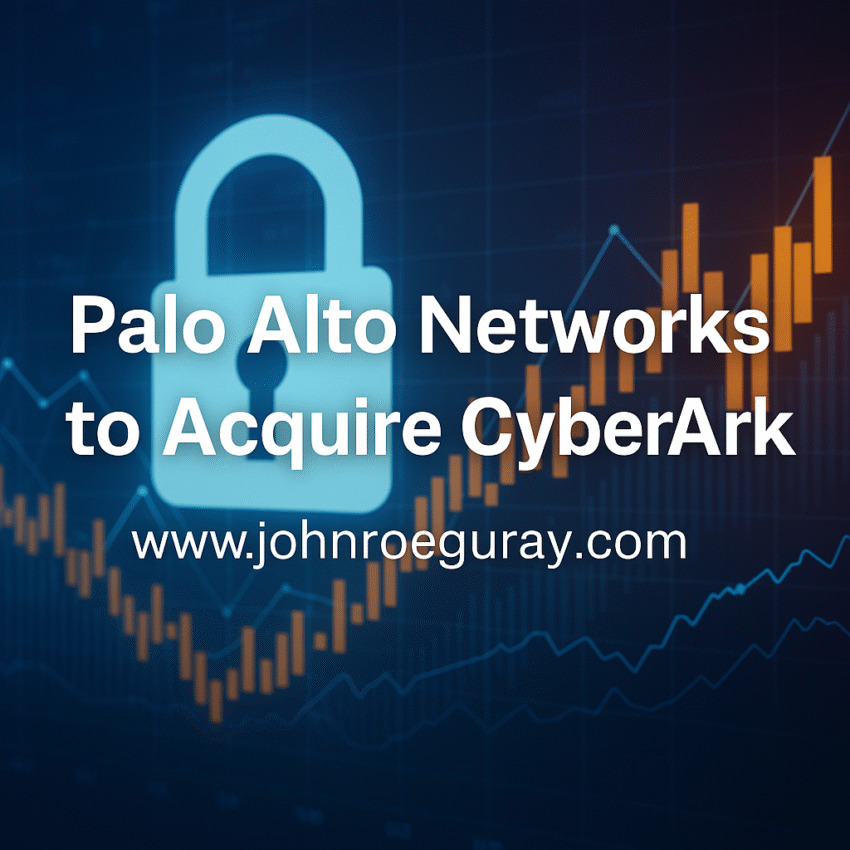Palo Alto Networks (PAN), a longstanding leader in cybersecurity, has announced its intent to acquire CyberArk, the identity security powerhouse. This bold move is poised to reshape the competitive landscape of enterprise security, especially at the convergence of AI, identity, and cloud-native defense. But does it deliver on the promises PAN claims in its press release? And how does it compare with its regional rivals?
Let’s take a closer look.
Why This Deal Matters
CyberArk is recognized globally for its best-in-class privileged access management (PAM) and identity security solutions. By acquiring CyberArk, PAN signals a significant acceleration of its strategy to consolidate and extend leadership across identity, network, cloud, and AI-driven security. The acquisition is valued at over $10 billion and is touted as a game-changer that will unify identity with threat detection and response into a single AI-powered security platform.
If successful, this will allow PAN to:
- Integrate identity-driven insights into XSIAM and Cortex platforms
- Automate least-privilege access and reduce identity-based attack vectors
- Deliver a unified and AI-enhanced Zero Trust fabric
- Expand into customer identity and cloud infrastructure entitlement management (CIEM)
Strengthening PAN’s Security Portfolio
PAN’s core advantage has long been its breadth of integrated offerings. With the addition of CyberArk, PAN will offer not just perimeter or workload defense, but identity-as-perimeter, which becomes increasingly important as organizations go passwordless, remote, and cloud-native.
With CyberArk’s capabilities added to its Cortex AI platform, PAN claims it can improve threat detection precision by up to 90%, reduce investigation time by 75%, and automate remediation within minutes. These are bold metrics—and while they echo PAN’s historical success with previous integrations (like Prisma Cloud), execution will be critical.
AI Developments and Future Integration
Both companies have invested heavily in AI. CyberArk has been embedding AI in identity behavior analytics, while PAN’s Cortex XSIAM and AIOps engines are central to its strategy. The synergy between these platforms could unlock the next wave of autonomous security operations, using AI not just for detection but proactive prevention.
This also plays into the broader industry narrative: identity is the new battleground for AI-enhanced threat actors. By combining machine learning with identity context, PAN aims to move from reactive defense to anticipatory protection.
Competitive Outlook: EMEA, APJC, and Americas
In EMEA, where European regulators demand strict identity compliance, this merger could give PAN a major edge over Fortinet and Check Point, both of which still lack fully integrated PAM offerings.
In APJC, where cloud adoption is accelerating in markets like Singapore, India, and Australia, this acquisition helps PAN challenge local and regional players like Trend Micro and Huawei Cybersecurity by offering a unified security stack with global trust and scalable identity protection.
In the Americas, PAN already holds a strong lead, but Microsoft and CrowdStrike have been closing in—especially with Microsoft’s Entra platform and CrowdStrike’s Identity Protection module. This move reestablishes PAN’s end-to-end narrative and could give it a competitive lift among large enterprises and regulated industries like finance and healthcare.
Are PAN’s Claims Credible?
According to PAN’s official press release, the company states that the acquisition will “enable autonomous identity threat detection and response.” The vision is compelling, and PAN has proven it can successfully integrate complex acquisitions (e.g., Demisto, Expanse, Bridgecrew). However, CyberArk’s deep roots in regulated and compliance-heavy environments also mean integration must be done without compromising existing customer trust and functionality.
The roadmap sounds strategic, the potential is massive—but the devil will be in the execution.
A New Security Titan?
Palo Alto Networks’ announcement to acquire CyberArk marks one of the most significant security deals of the decade. It not only reinforces the strategic importance of identity in the cybersecurity value chain, but also signals a shift toward platform consolidation and AI-driven security orchestration.
If PAN executes well, it won’t just lead—it may define—the future of cybersecurity.
A Strategic Leap with High Stakes
This acquisition represents more than market consolidation—it’s a pivot toward a new architecture of trust in the AI era. For customers, competitors, and the tech industry at large, it’s a signal that the future of security lies at the intersection of identity, automation, and intelligence.


